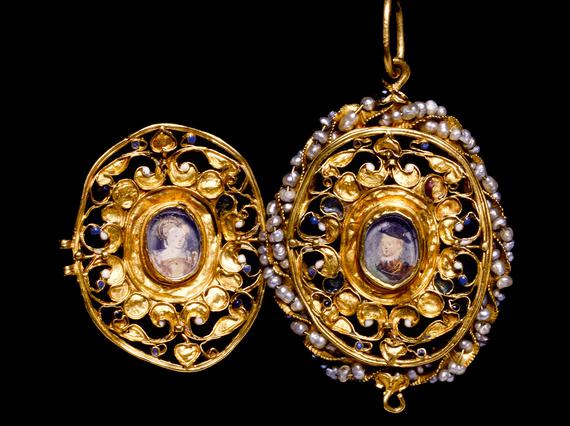
Renaissance and Early Modern History
Our Renaissance and Early Modern collections contain objects relating to Scottish history from c.1450-1750.
This period encompasses the cultural developments of the Scottish Renaissance, the Protestant Reformation, and the seismic events of the Union of the Crowns, the Covenanting Revolution, the Anglo-Scottish Union of 1707 and the Jacobite Rebellions of 1715 and 1745.
Collections include decorative arts, jewellery, metalwork, furniture and weaponry, and objects relating to monarchical power, religion, trade and everyday life. Many of our objects were made in Scotland, but others were not, material evidence of the connections between Scotland, Europe and further afield.
Most notable are iconic pieces related to Mary, Queen of Scots, the Stewart kings, the Darien Venture, and the Jacobites. Star items include the Penicuik Jewels associated with Mary, a sword, targe and travelling canteen belonging to Prince Charles Edward Stuart, the awe-inspiring execution device, the Maiden, and the Company of Scotland’s large iron-bound chest related to the Darien Venture, the financially disastrous colonial scheme.
Meet the team
Renaissance and Early Modern History stories
- Discover

Exile, rebellion, and vanquishment: The Jacobite challenge
In 1689, James VII and II was deposed. There then followed over half a century of attempts to reclaim the throne of Great Britain for the Stuart dynasty: the Jacobite challenge. National Museums Scotland now cares for a variety of objects… - Discover

The Old Pretender: An introduction to James ‘VIII’
Raised in exile, James Francis Edward Stuart (10 June 1688 – 1 January 1766) was the son of King James VII and II and his second wife, Mary of Modena. Who was James ‘VIII’?When the exiled King James VII and II died in 1701, his son James… - Discover

Life and deathline of Mary, Queen of Scots
Crowned Queen of Scots at just nine months old; married, crowned Queen Consort of France and widowed all by the time she was 18 years old: Mary Stewart's life was nothing if not eventful. Let's dig into the facts about her tumultuous life…


